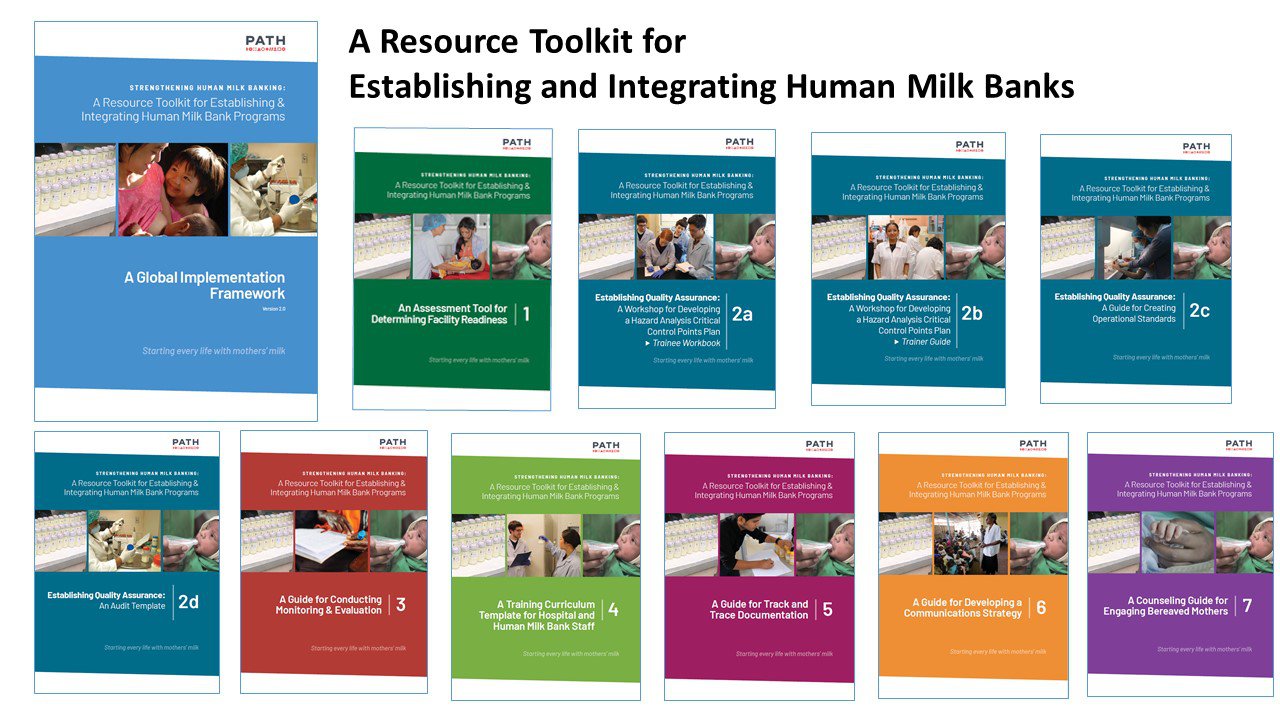Strengthening Human Milk Banking
Return to the Increasing Access and Intake of Human Milk page.

Ensuring equitable access to human milk for all infants has the potential to save countless lives, especially vulnerable neonates, such as those born low-birthweight or pre-mature. Yet many do not have access to their own mother’s milk in the first critical hours or days of life. For such infants, provision of donor human milk is recommended as superior to formula. A rigorous human milk bank system for screening, pasteurizing, storage and distribution, is required to ensure safety of donor human milk. If implemented as a component within a comprehensive and integrated system, human milk banks can also serve a broader purpose for protecting, promoting and supporting breastfeeding, embedded within both nutrition and newborn care programming.
PATH is working to strengthen systems for optimizing integrated newborn nutrition programs. A critical gap has been the lack of global standards to inform the safe, ethical and quality operationalization of human milk banks and guidance on appropriate use of donor human milk. To address this gap, PATH convened a Technical Advisory Group in 2017 to develop a roadmap for developing key resources and standards for strengthening integrated human milk banking programs. Through a highly collaborative process, involving strategic and technical input from key technical and policy leaders from around the world, PATH has developed “Strengthening Human Milk Banking: A Resource Toolkit for Establishing and Integrating Human Milk Banks” as a compendium of standards to advance the field.
This toolkit is comprised of 11 separate core documents and accompanying materials—including templates, standards, and tools—to guide critical steps for establishing human milk banking as an integrated component within breastfeeding support and neonatal care, with in-depth focus on readiness, quality assurance, operations, auditing, training, monitoring and evaluation, and communications. These tools are intended to be utilized as a cohesive package, with embedded links throughout to orient and guide users to relevant resources. This toolkit, in its entirety, is freely available and globally accessible. The content was developed to be adaptable to local context requirements to maximize effectiveness and reach.
To download the complete toolkit package as a zip file, click here. Each distinct tool is described and separately accessible below.
To access a presentation with an overview of the resource toolkit, click here.
-
A Global Implementation Framework 2.0
Resource toolkit base document, outlining core requirements and quality principles for human milk banks globally.
-
An Assessment Tool for Determining Facility Readiness
Pathways for decision-makers to assess readiness in creating comprehensive, safe, and integrated systems.
-
HACCP Trainee Workbook
Interactive HACCP training workshop to guide development of site-specific HACCP plans to ensure safety and quality.
-
HACCP Trainer Guide
Interactive HACCP training workshop to guide development of site-specific HACCP plans to ensure safety and quality.
-
A Guide for Creating Operational Standards
Templates to facilitate the development of locally appropriate quality assurance guidelines and national standards.
-
An Audit Template
Template to facilitate the self-evaluation of standard operating procedures, staffing, equipment, and infrastructure.
-
A Guide for Conducting Monitoring and Evaluation
Guidance and templates for developing research systems to generate evidence documenting operations and outcomes impact.
-
A Training Curriculum Template for Hospital and Human Milk Bank Staff
Template to facilitate the development of locally adapted training curriculum for hospital-based integrated systems.
-
A Guide for Track and Trace Documentation
Step-by-step processes for quality tracking and record keeping with templates for logs, forms, and registers.
-
A Guide for Developing a Communications Strategy
Guidance, examples, and templates for establishing communications messaging for integrated and comprehensive systems.
-
A Counseling Guide for Engaging Bereaved Mothers
Resources for healthcare workers to appropriately and sensitively discuss lactation options for bereaved mothers.